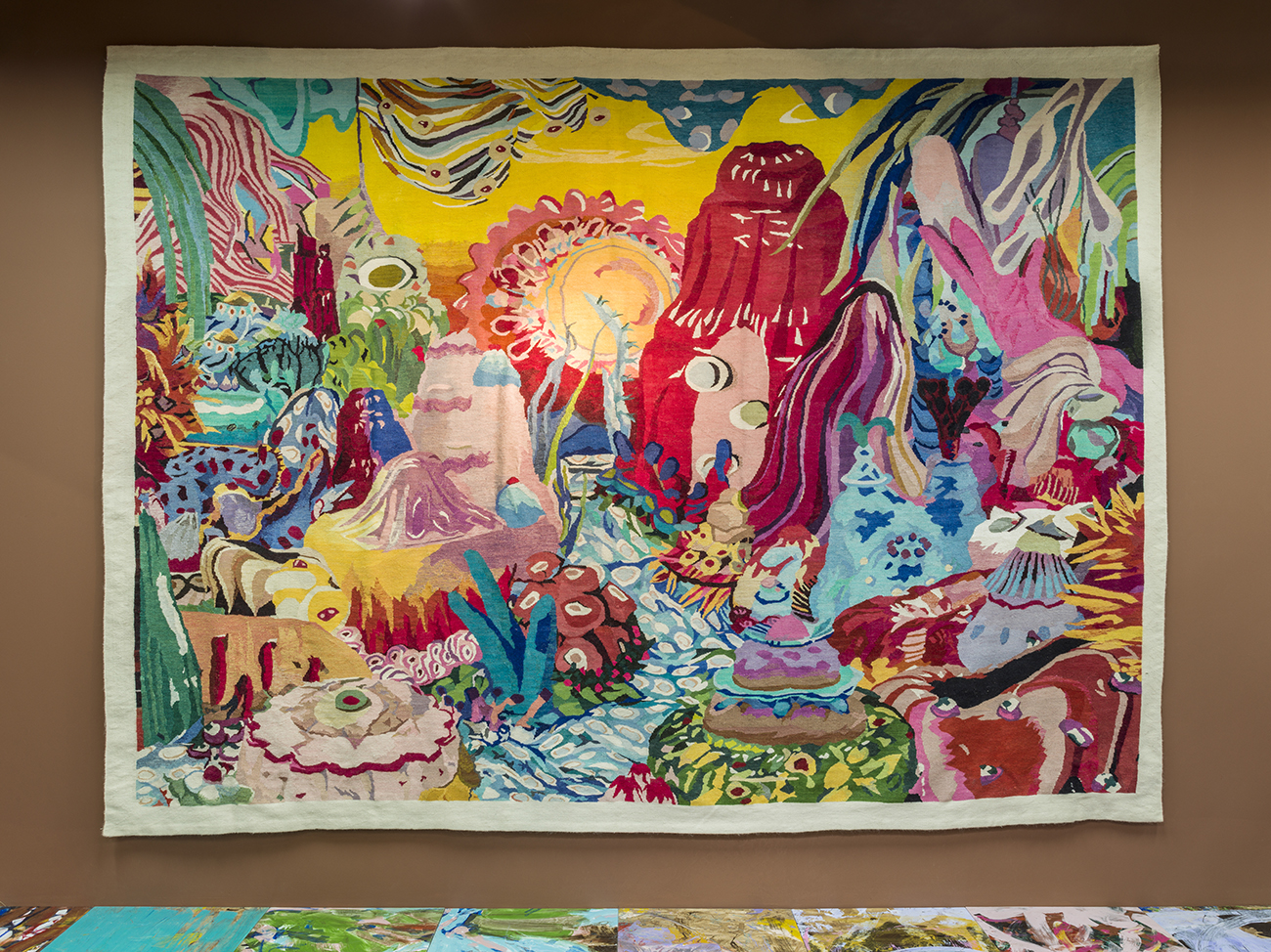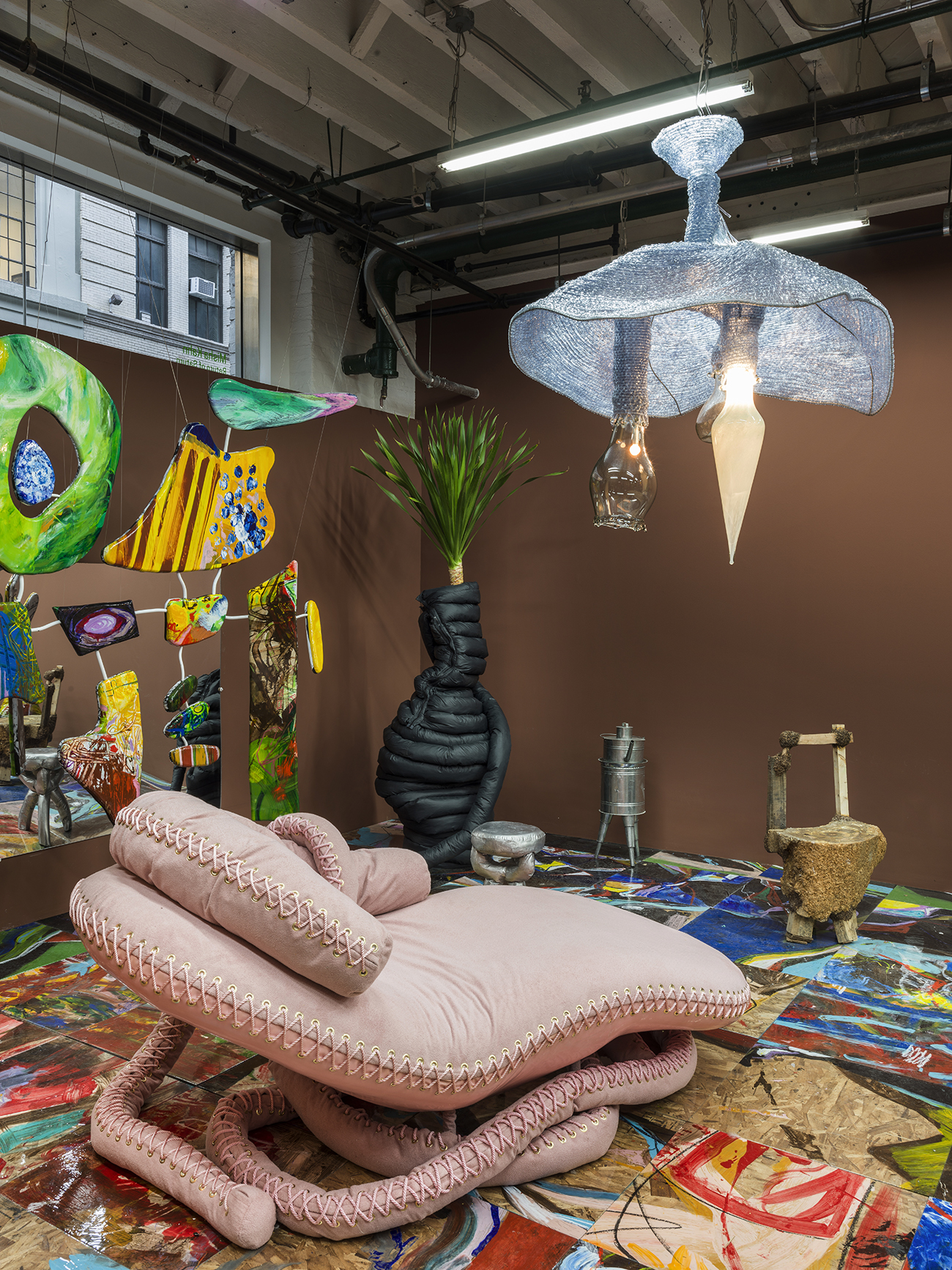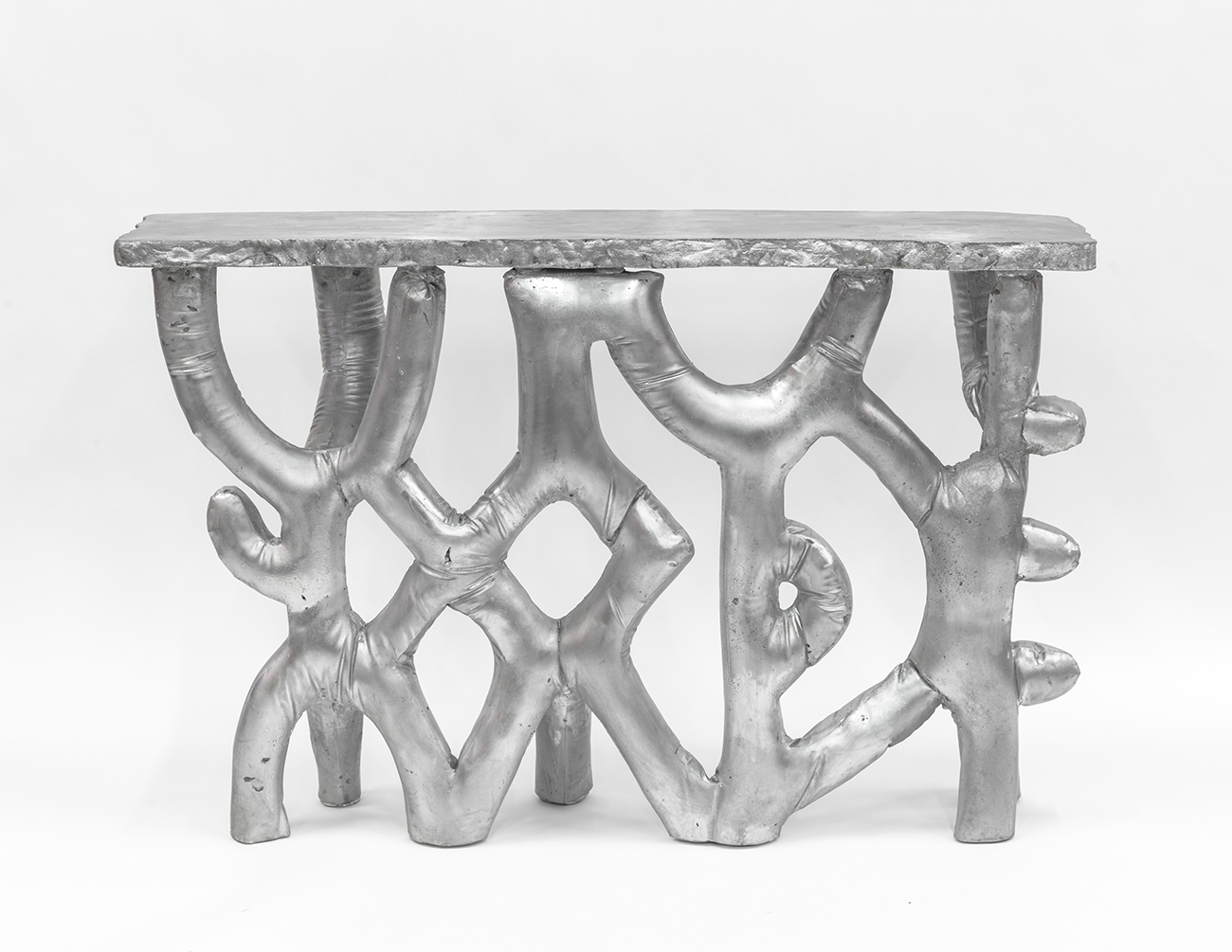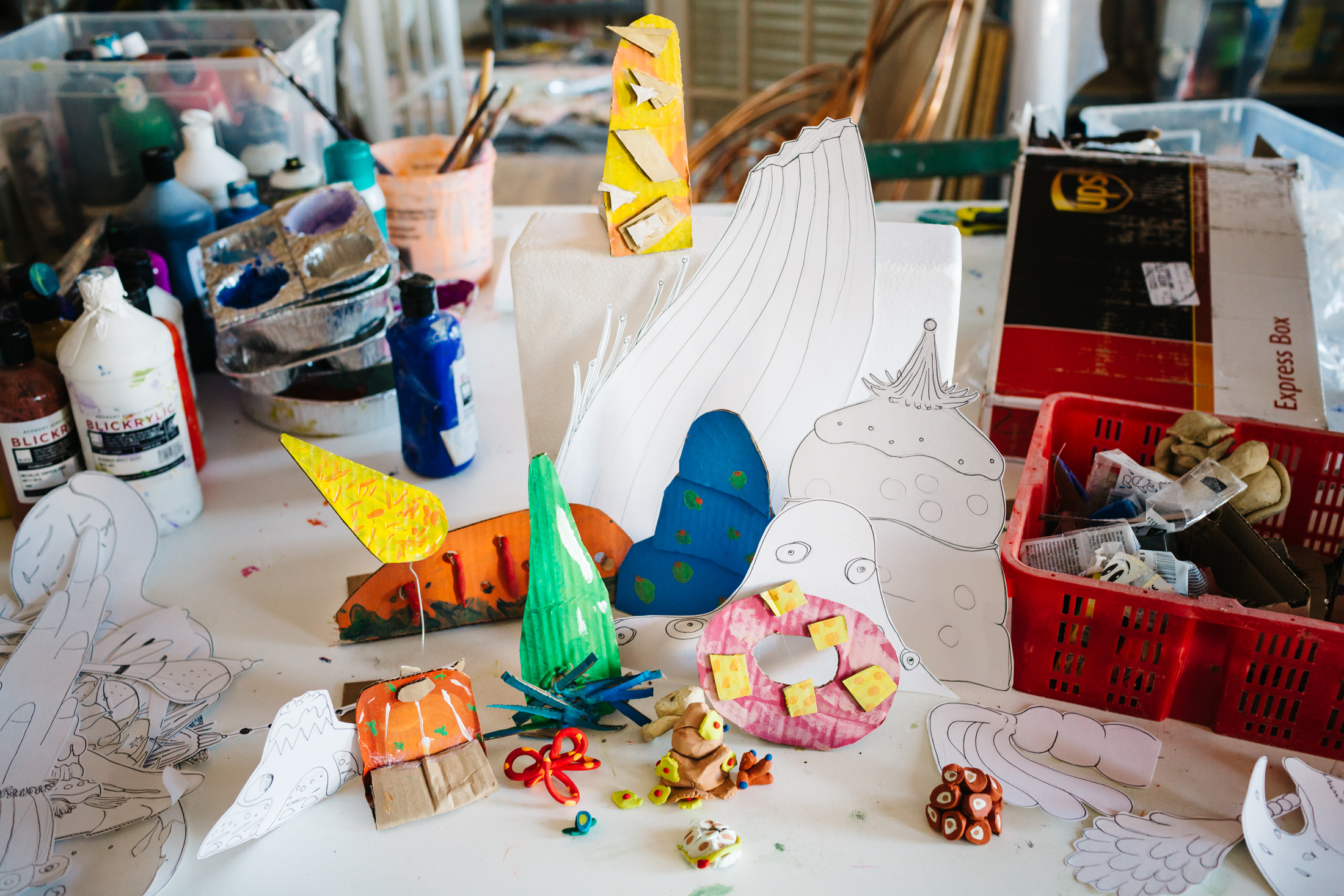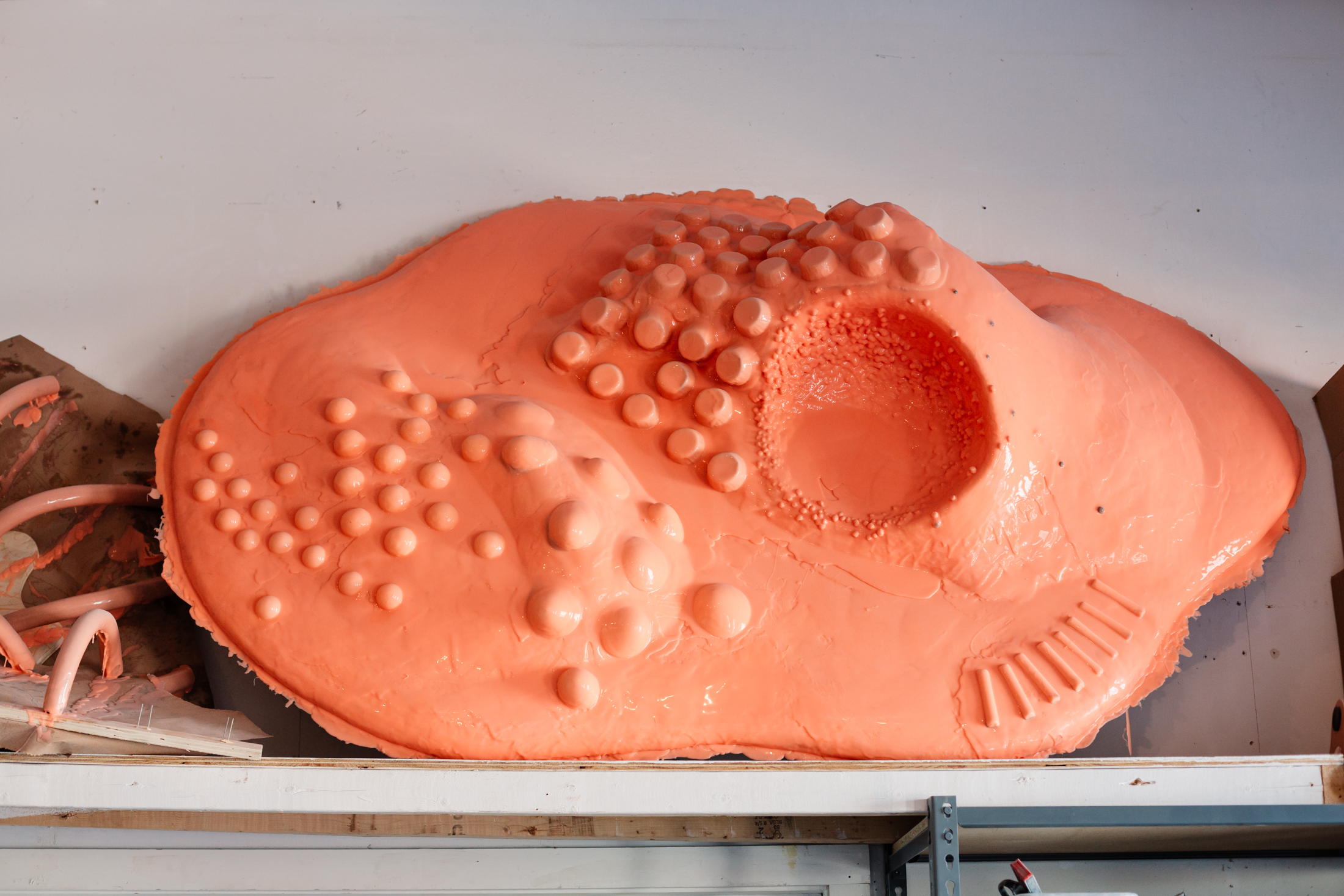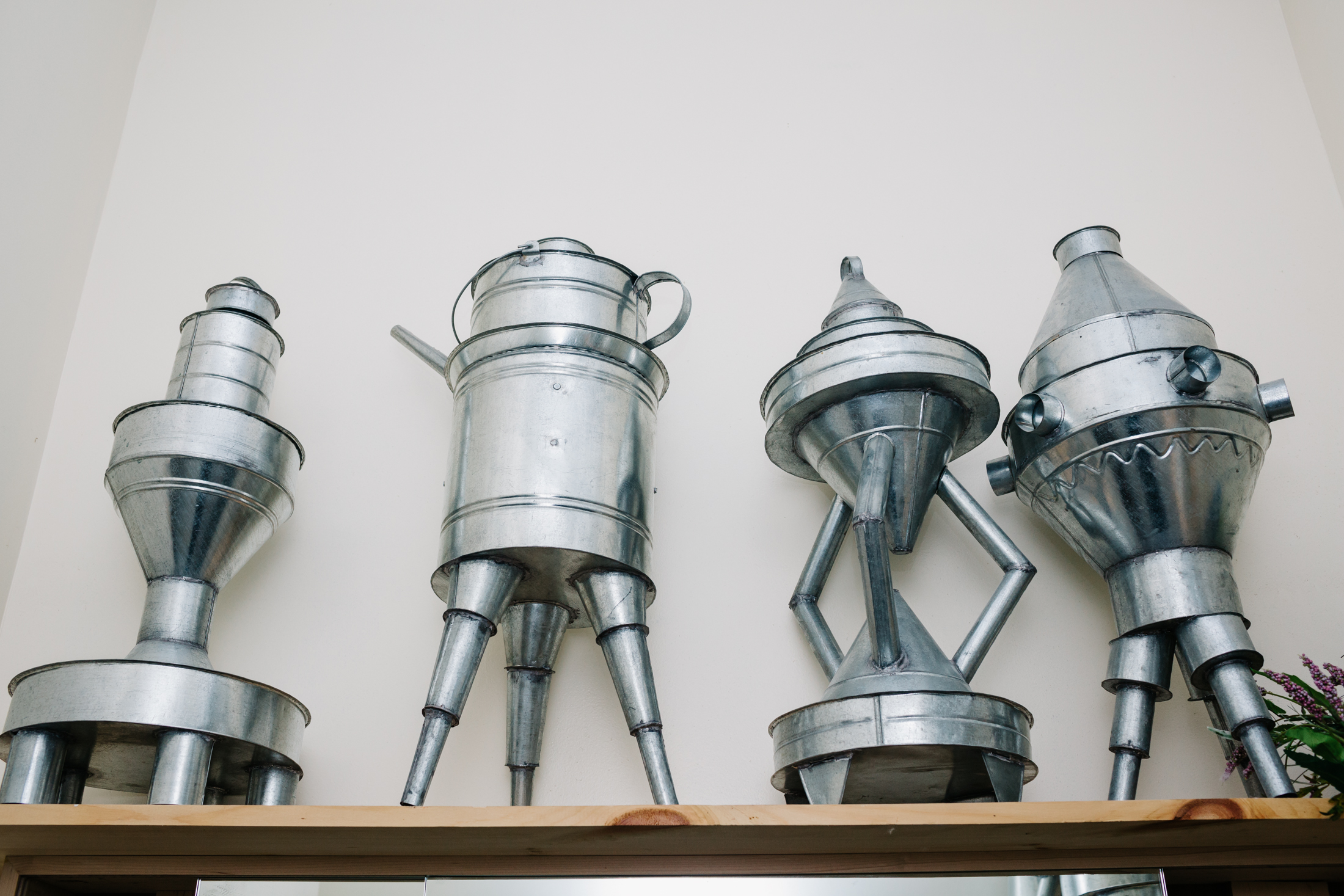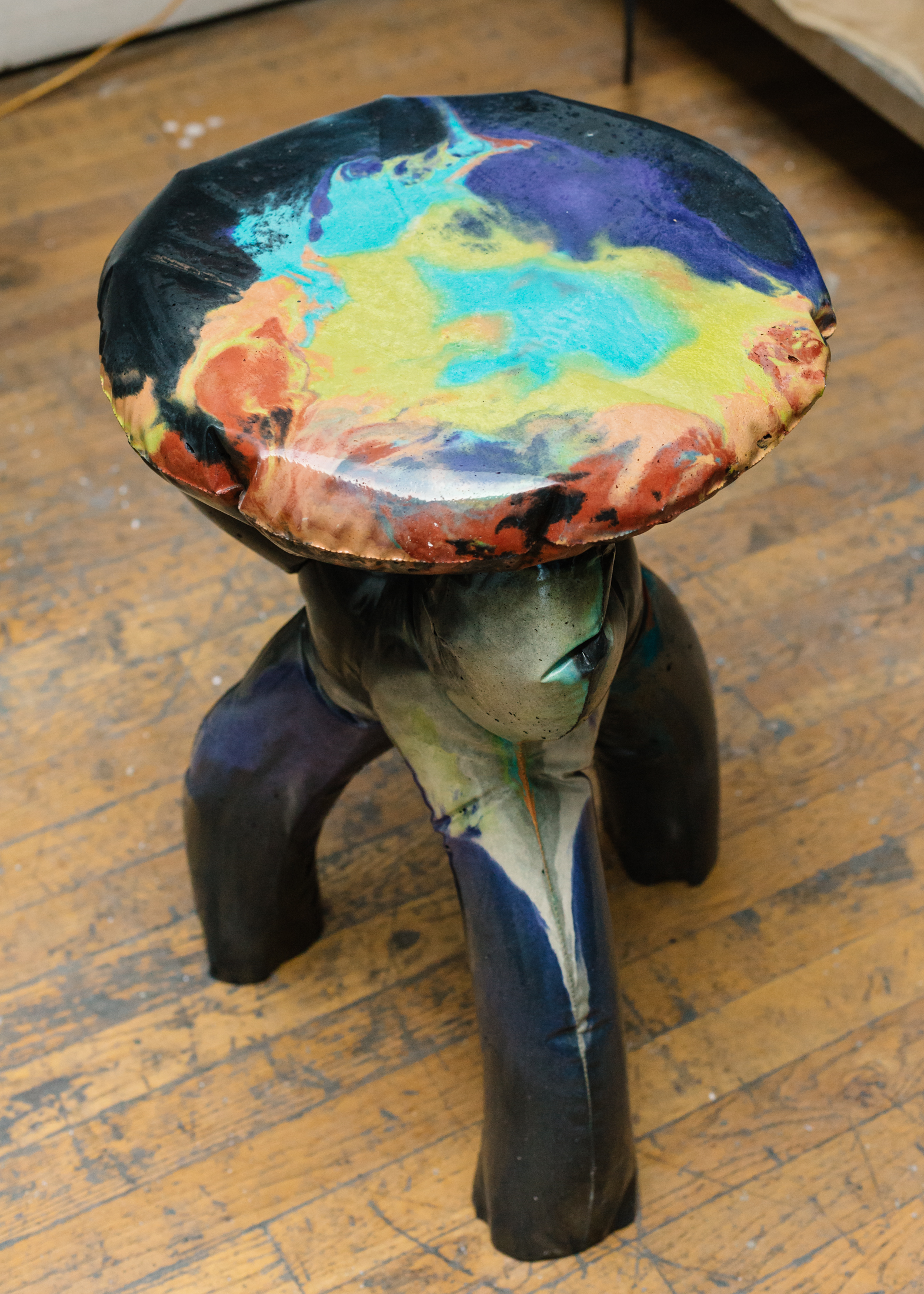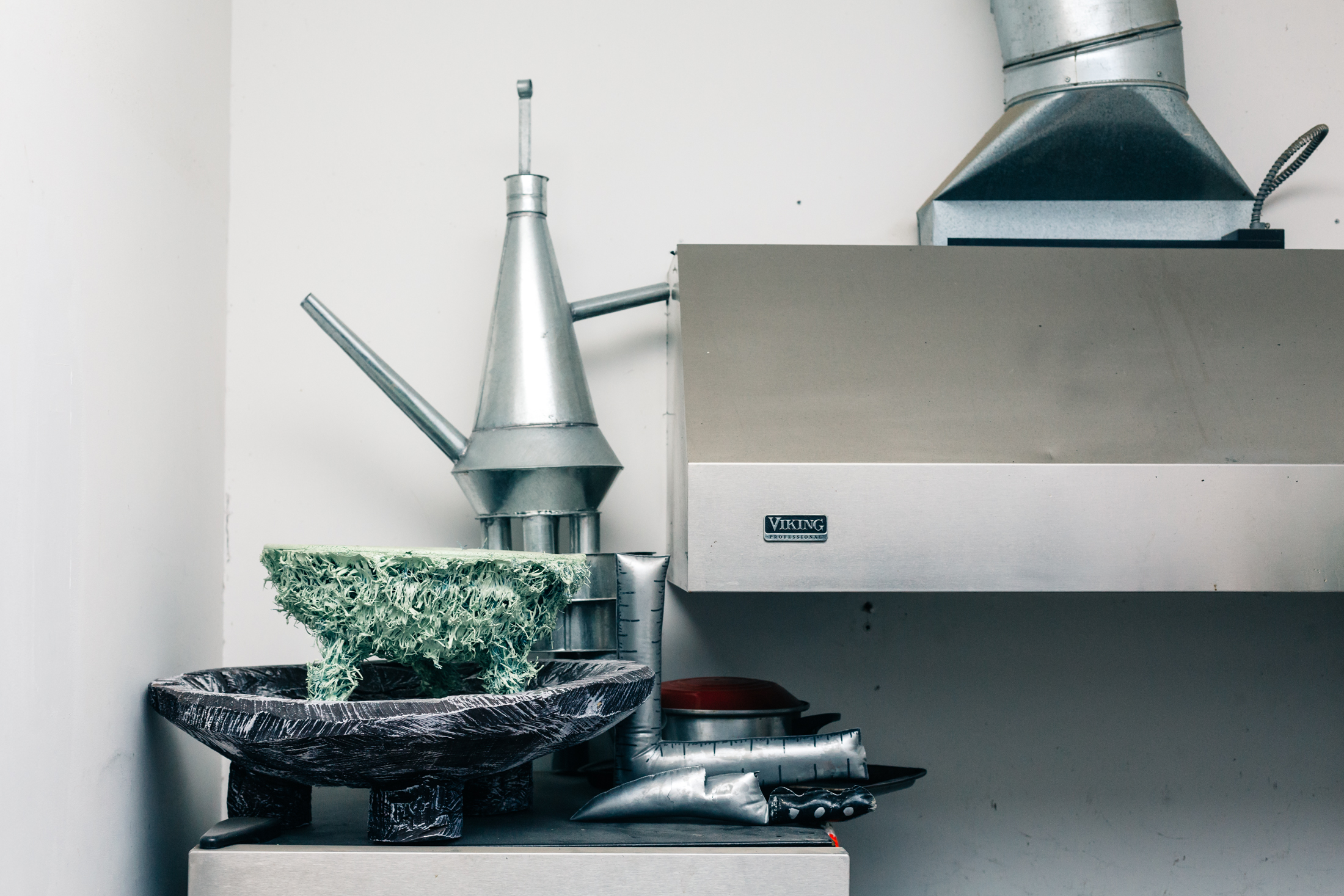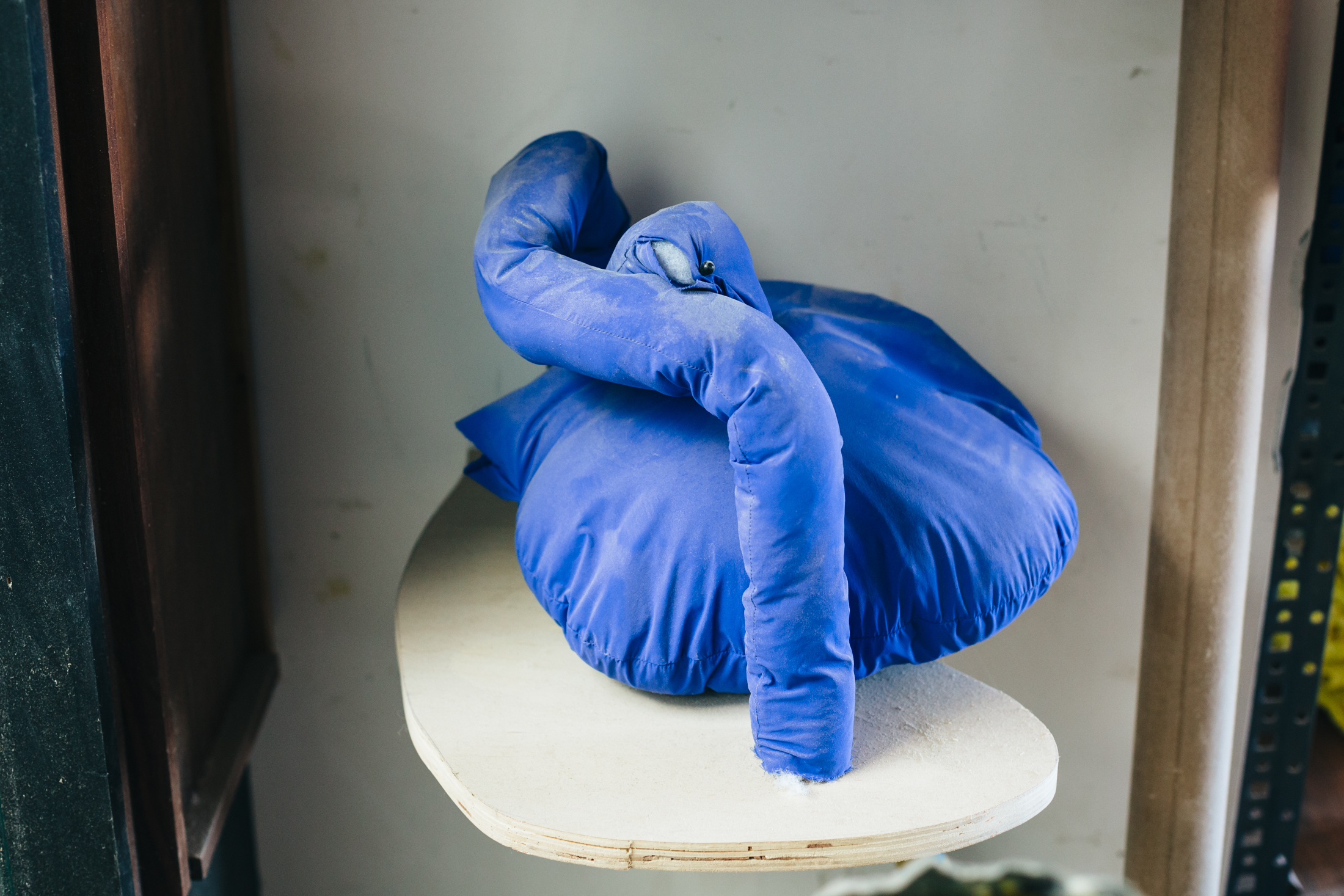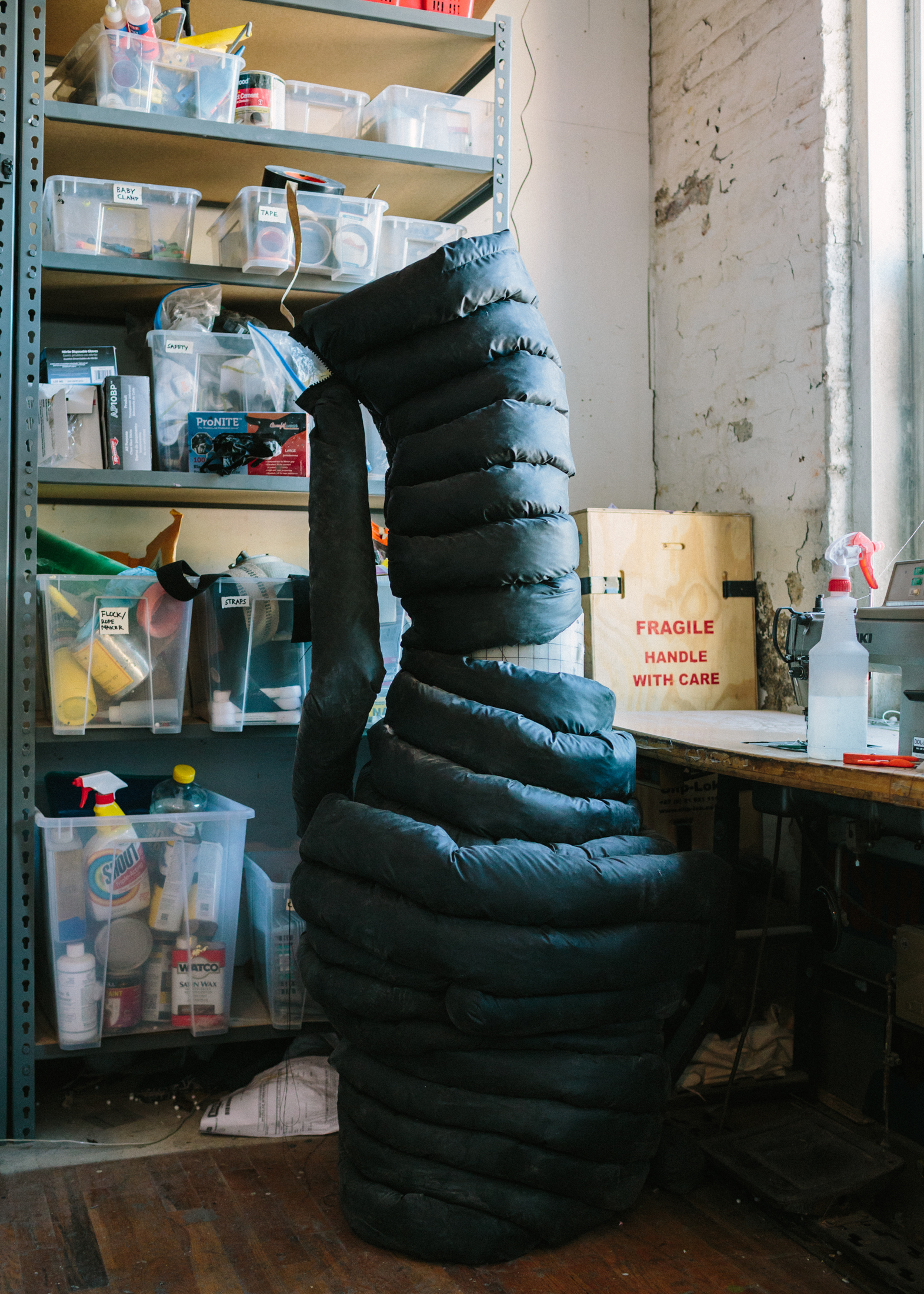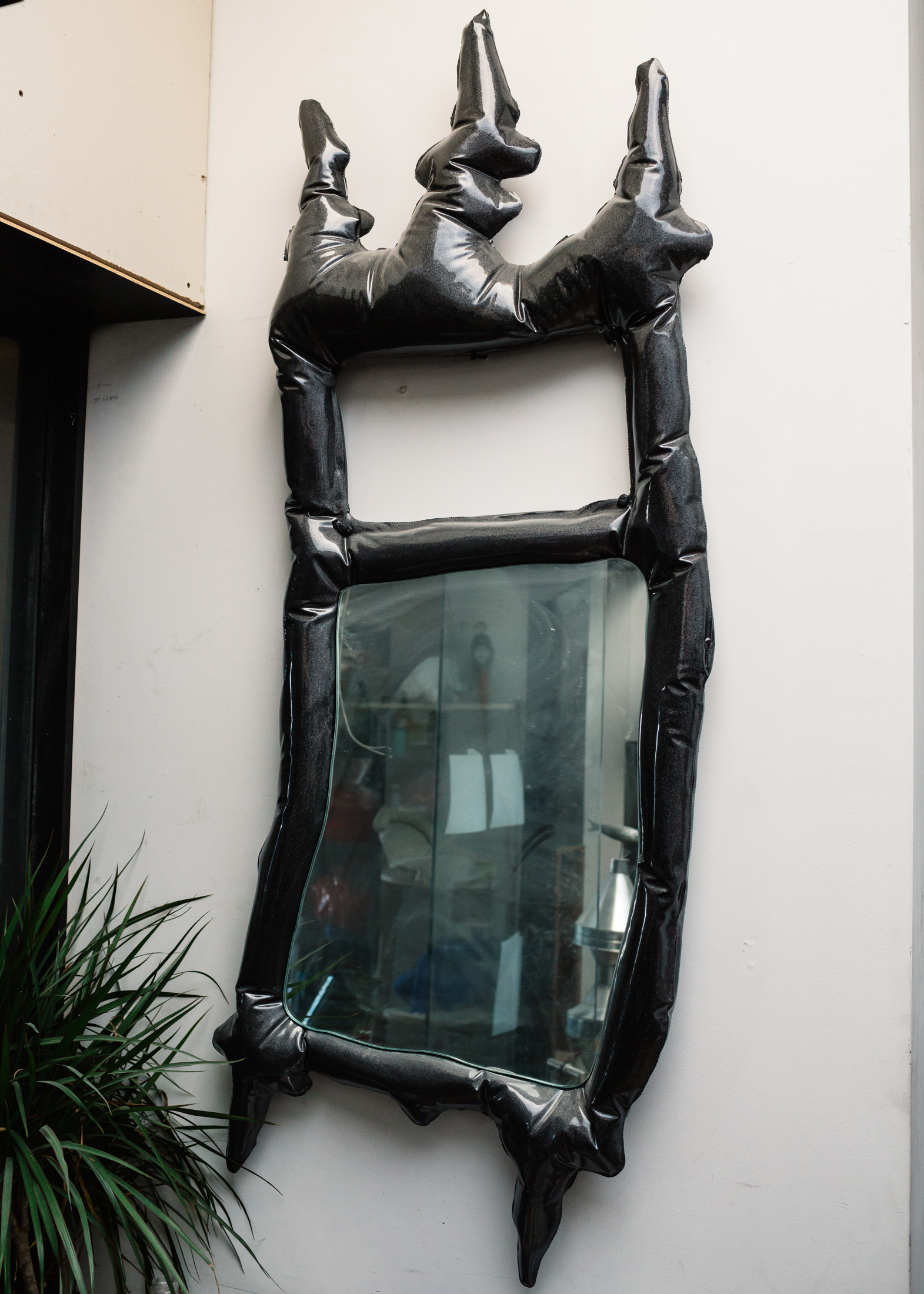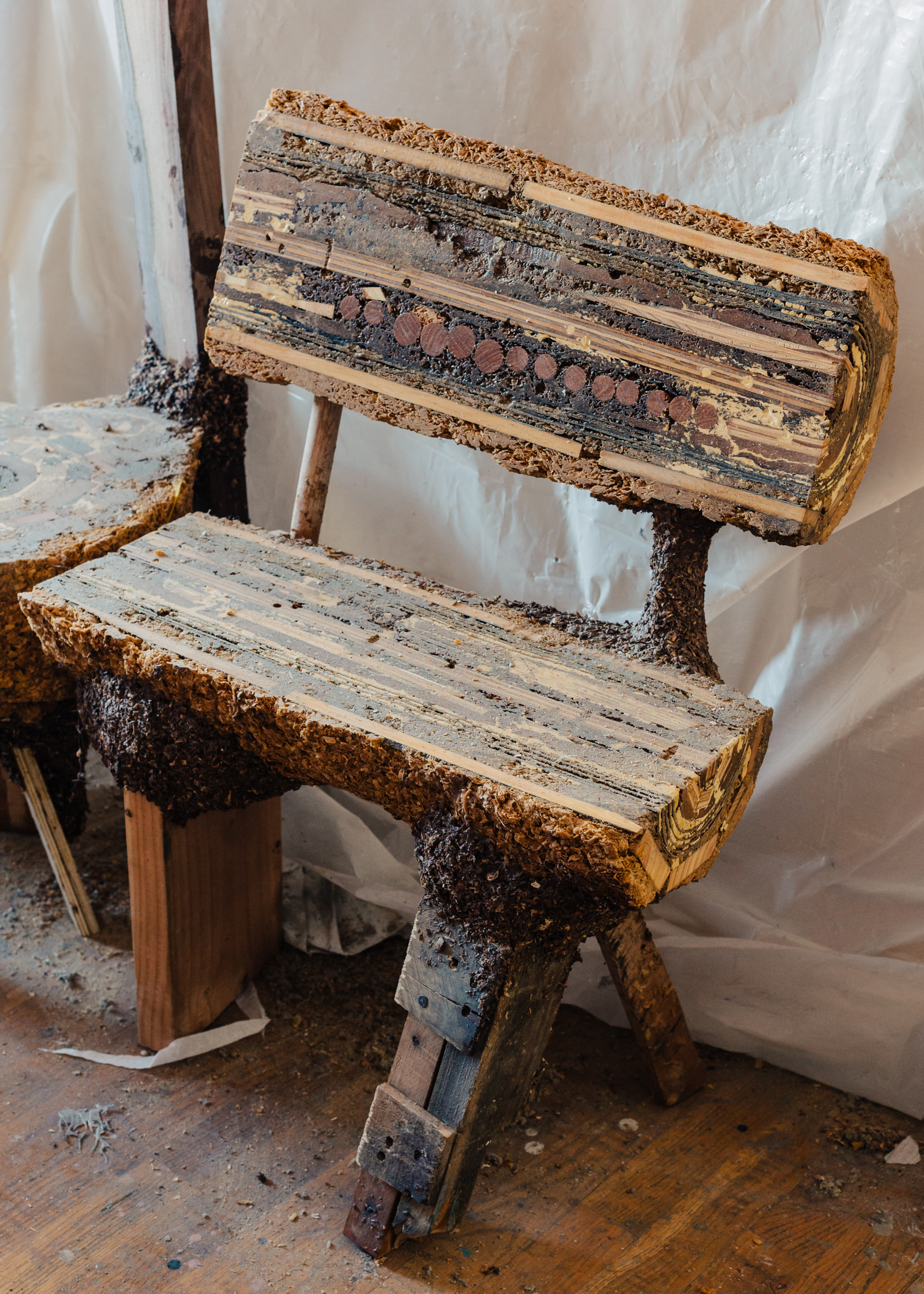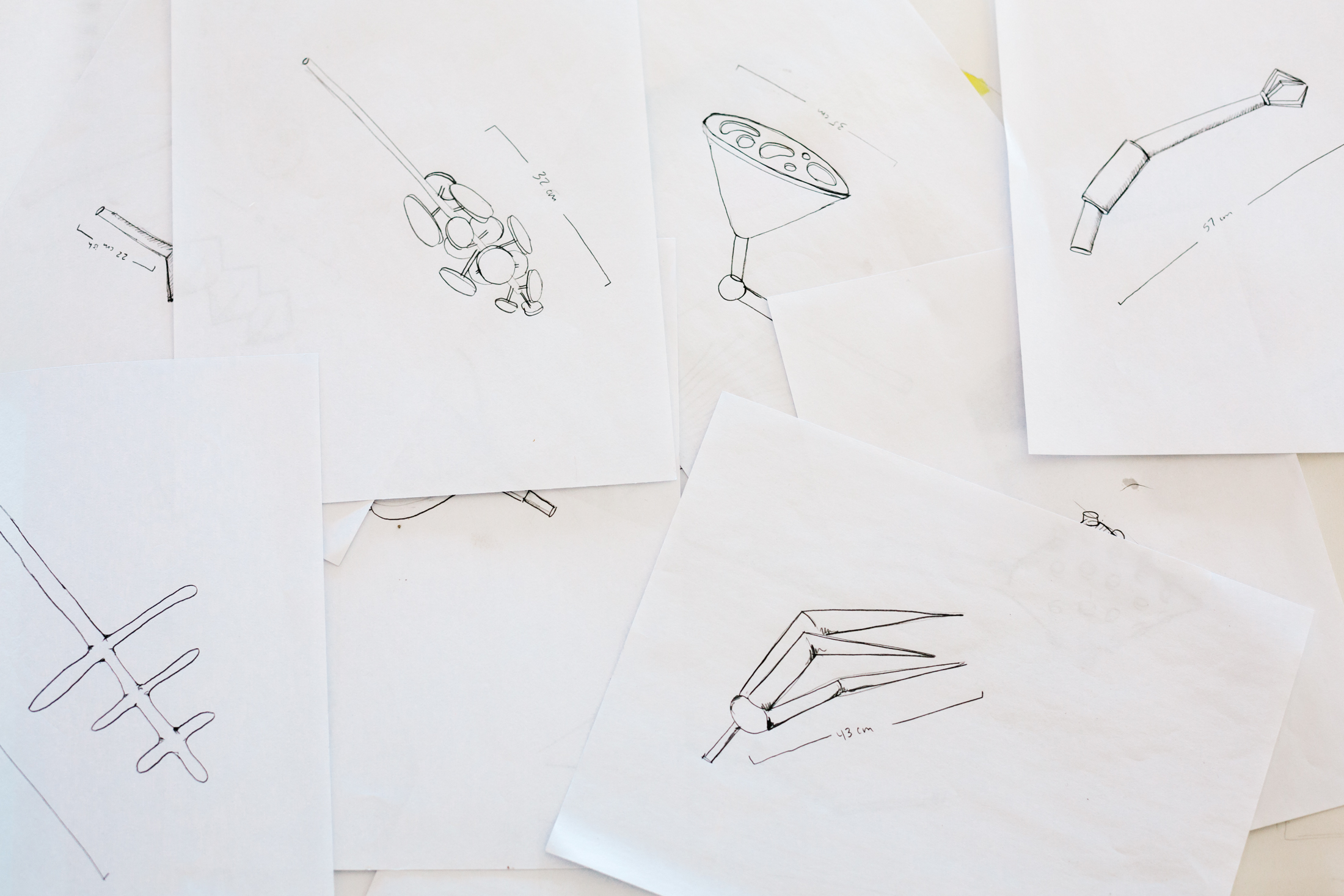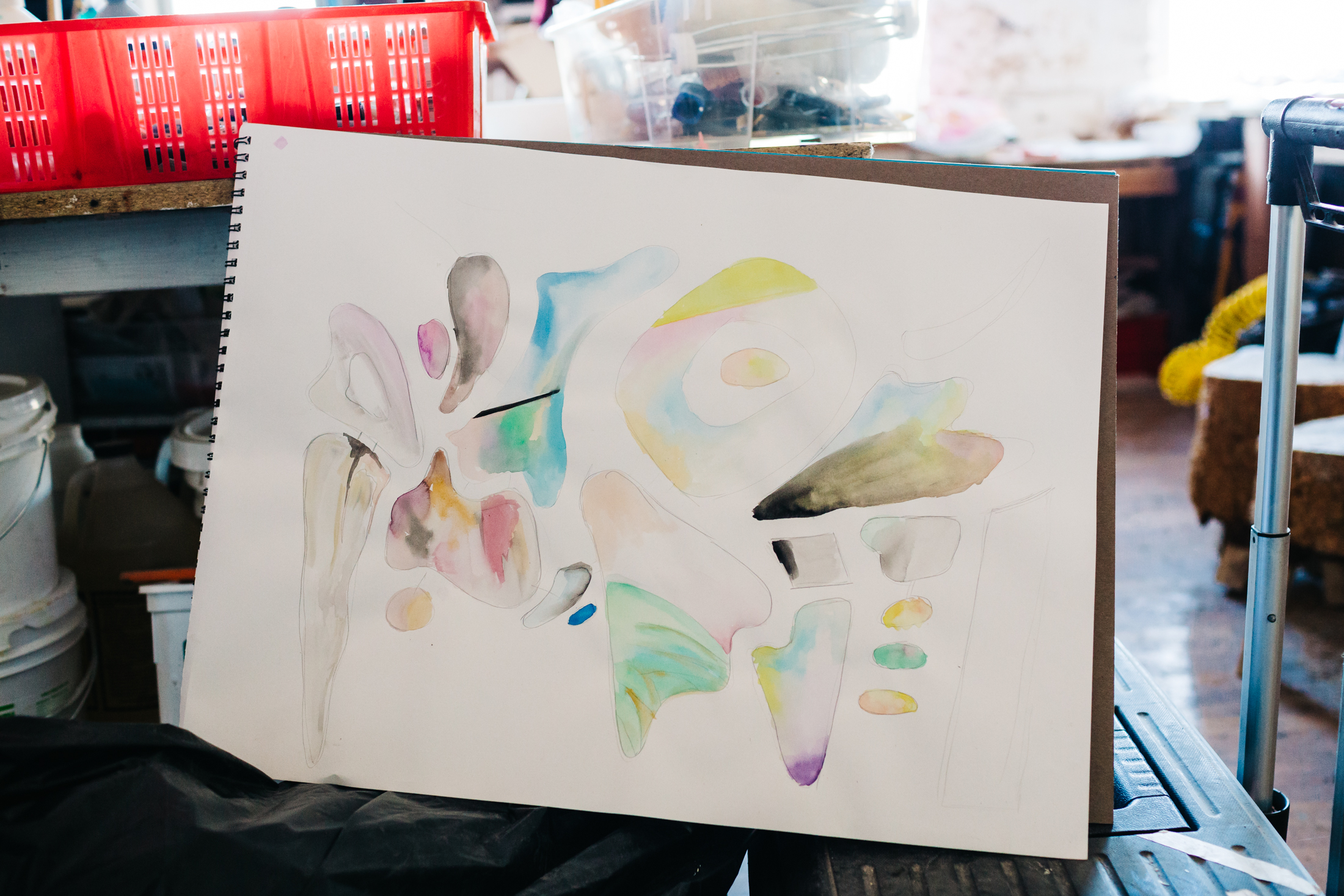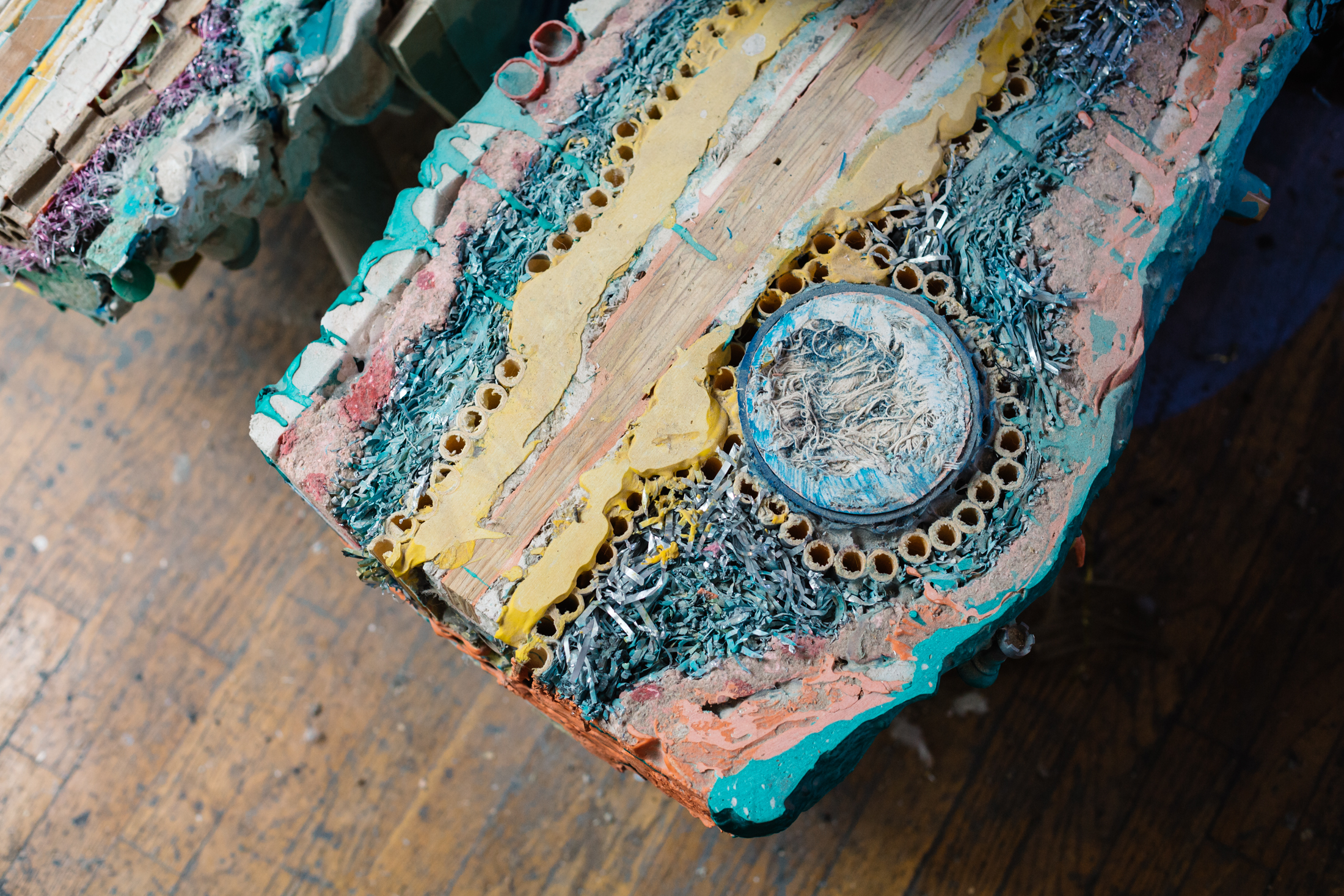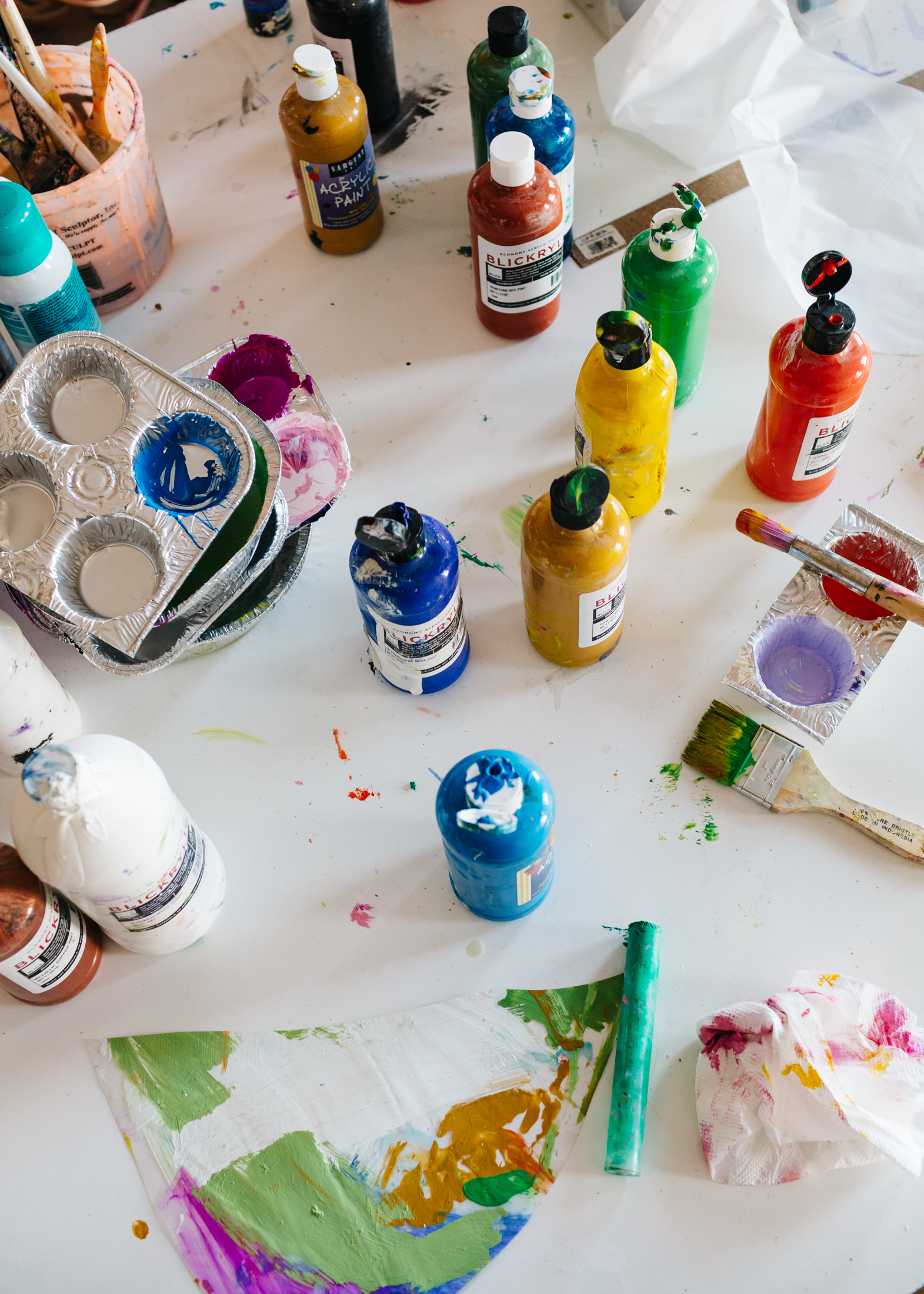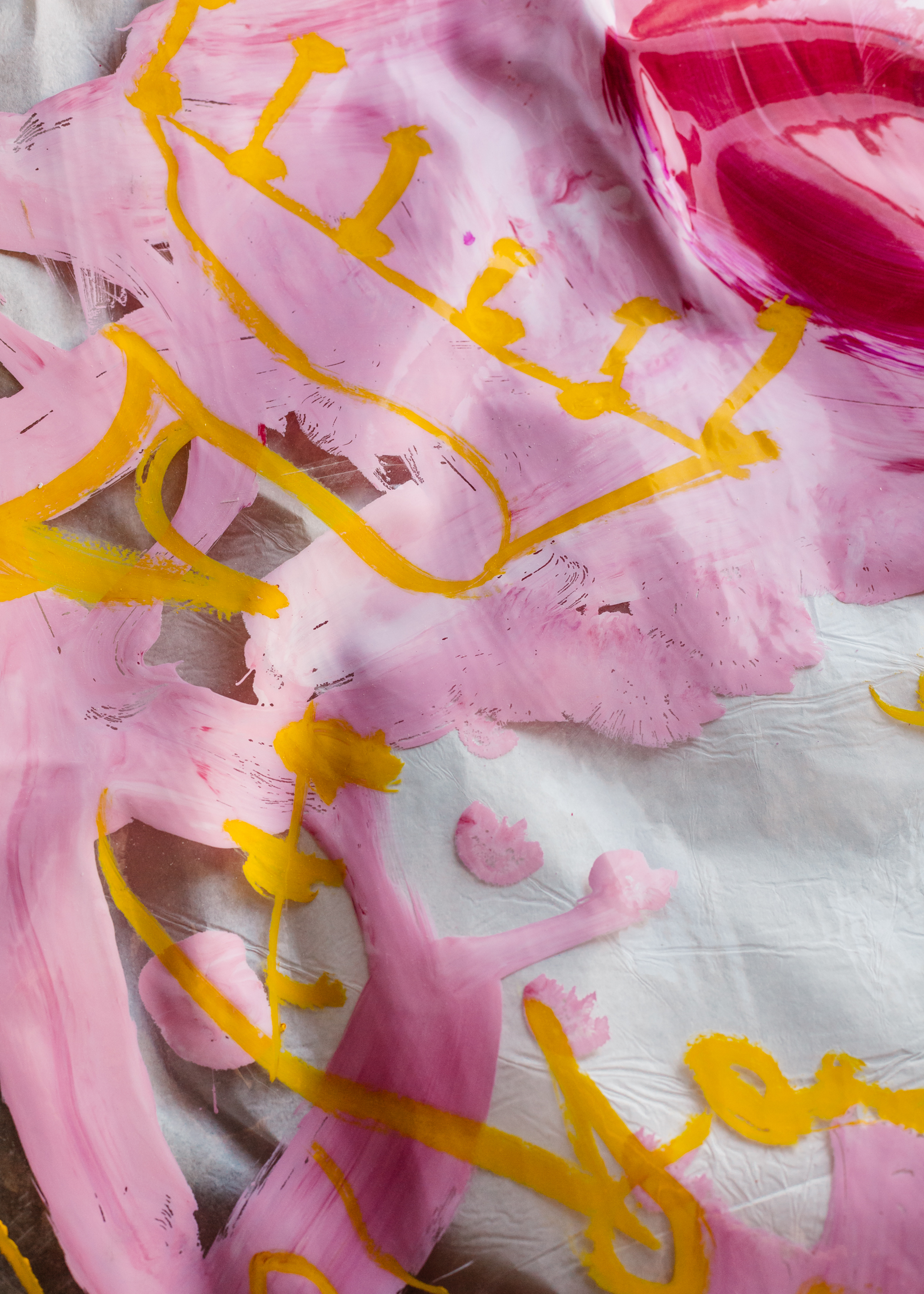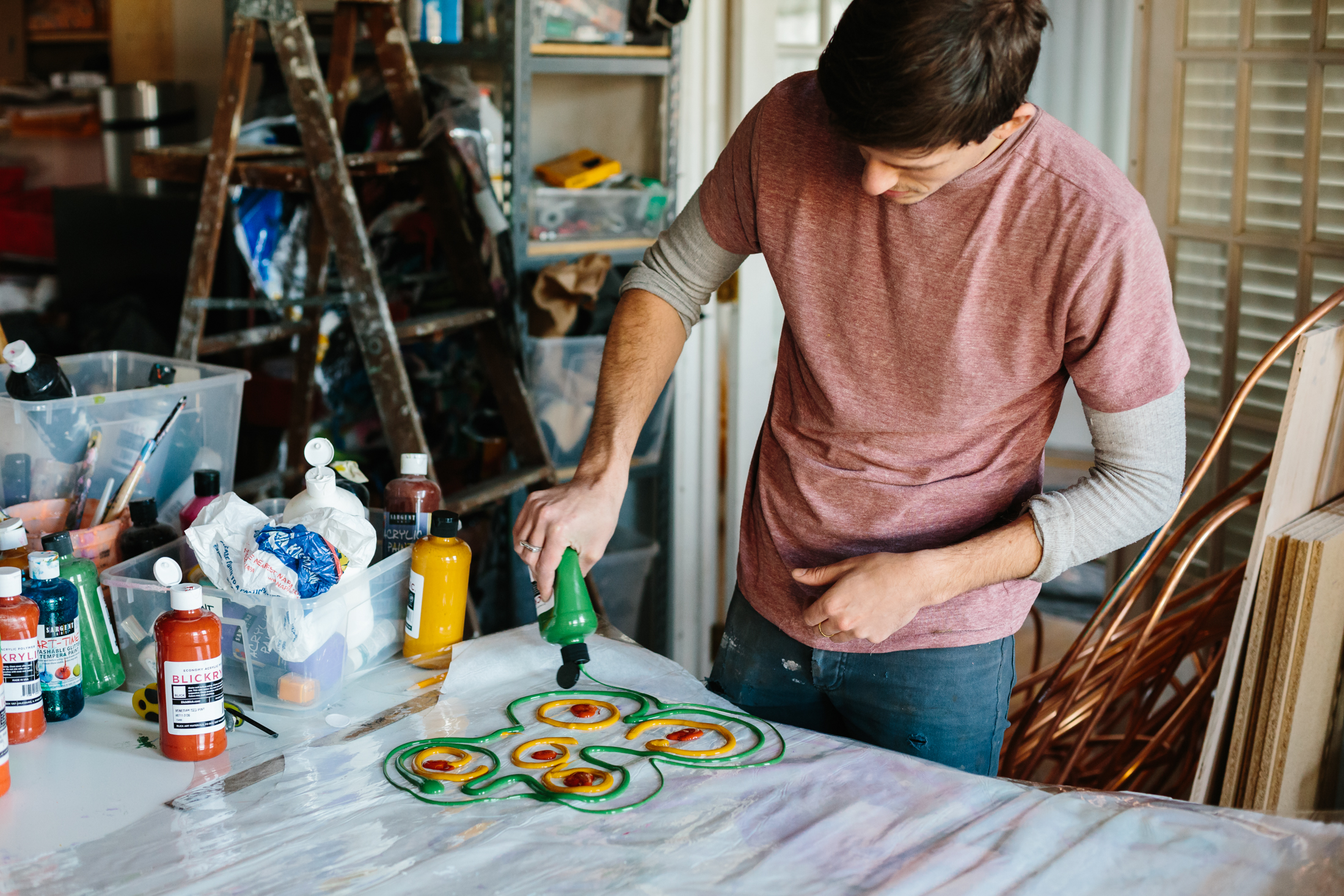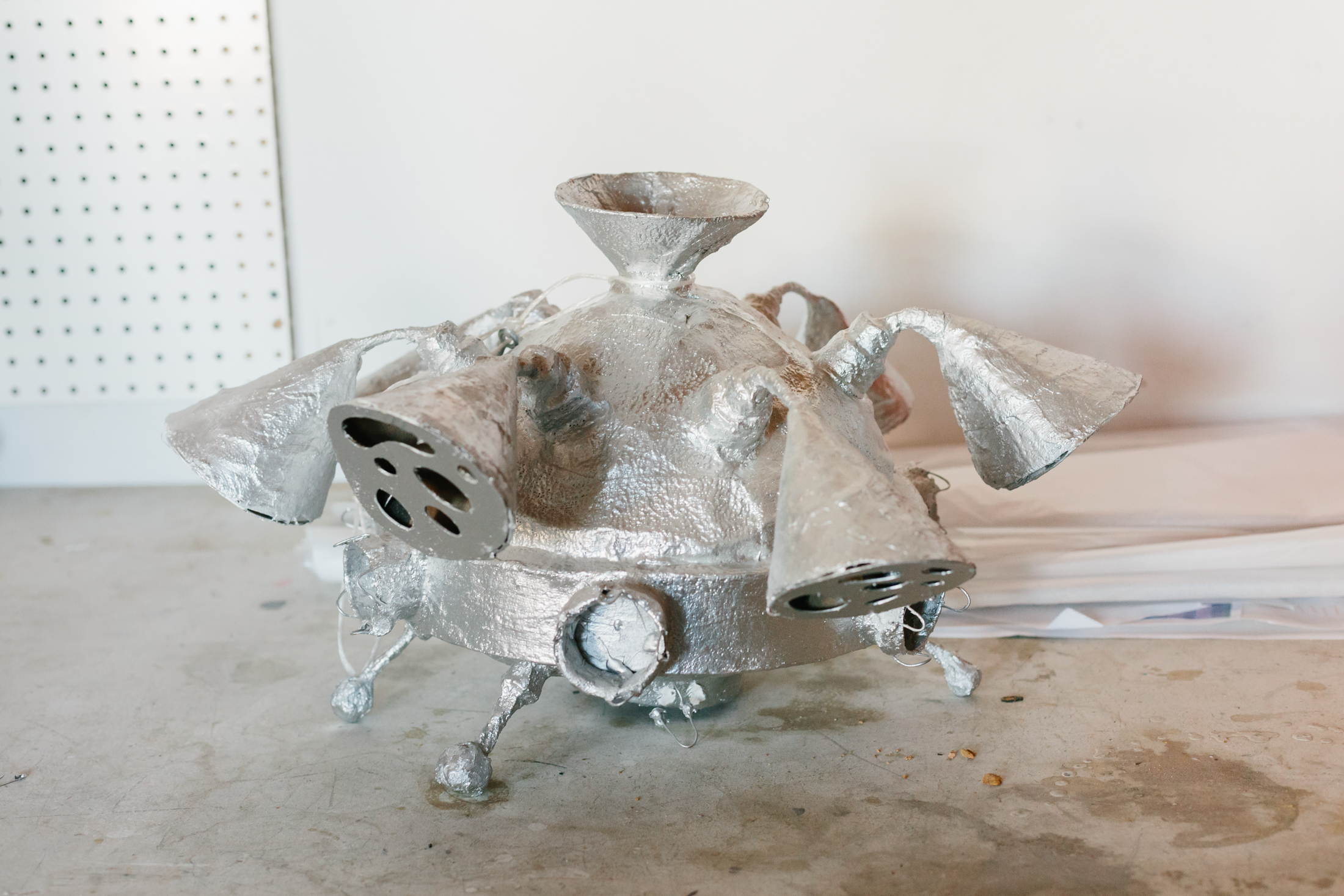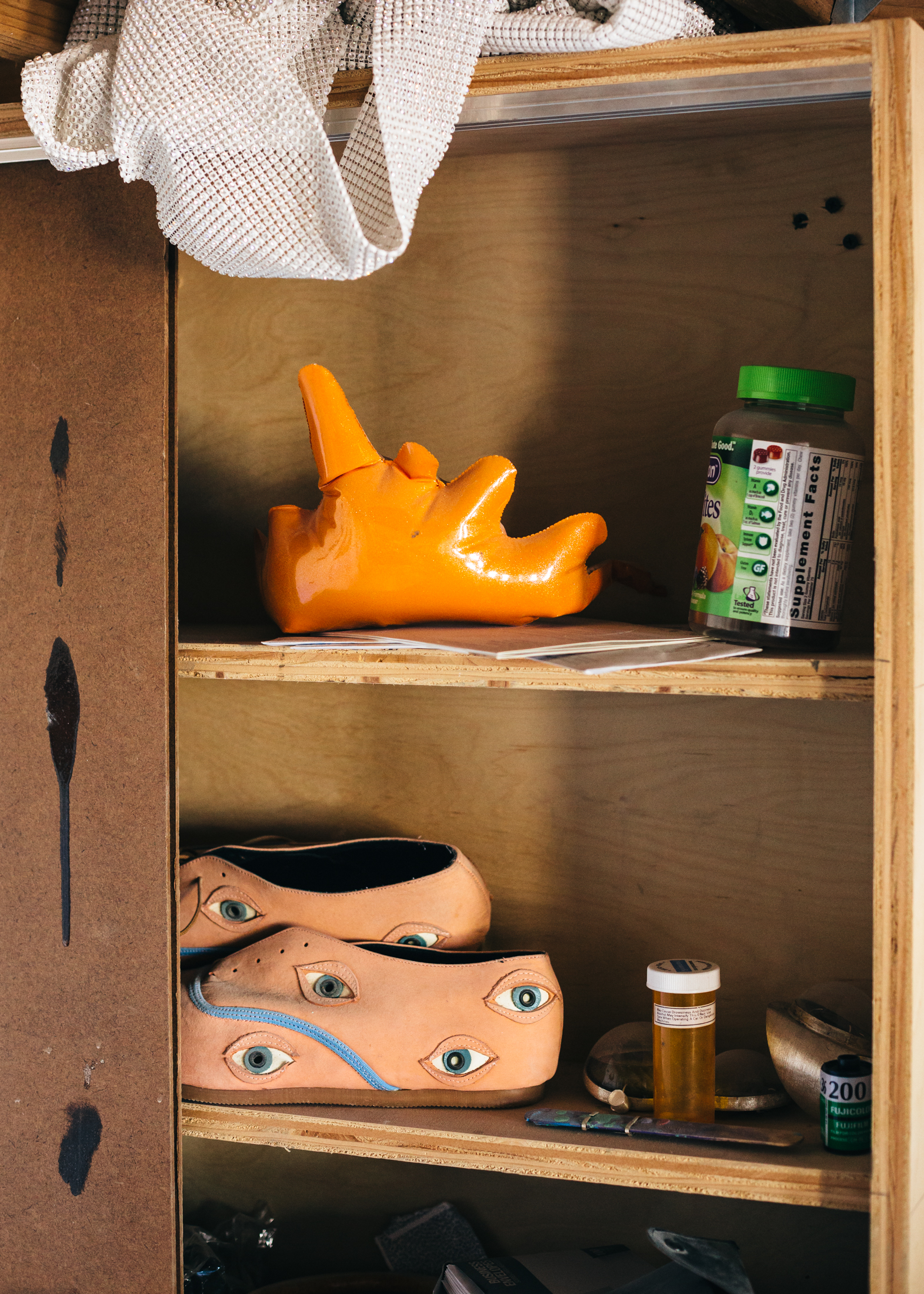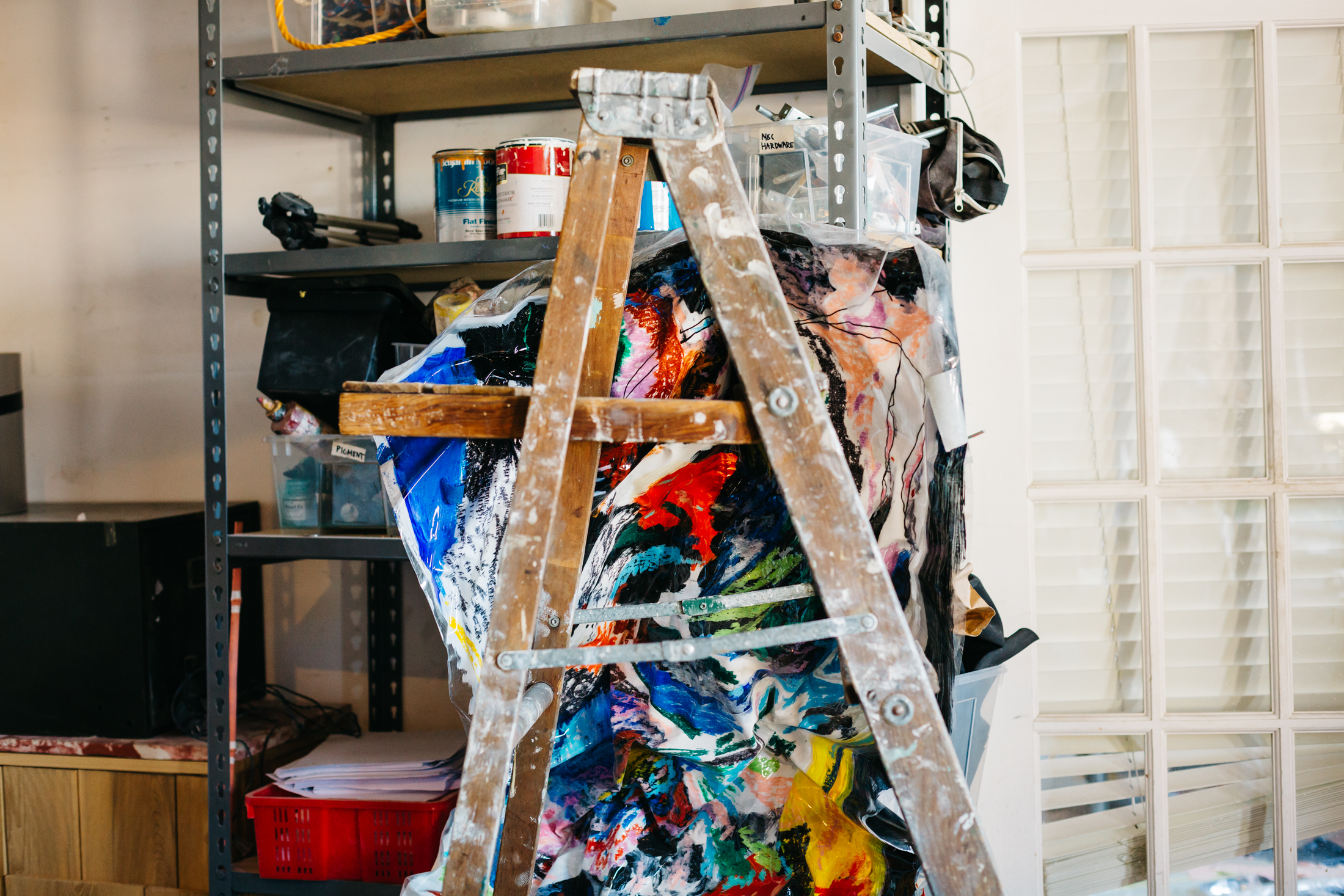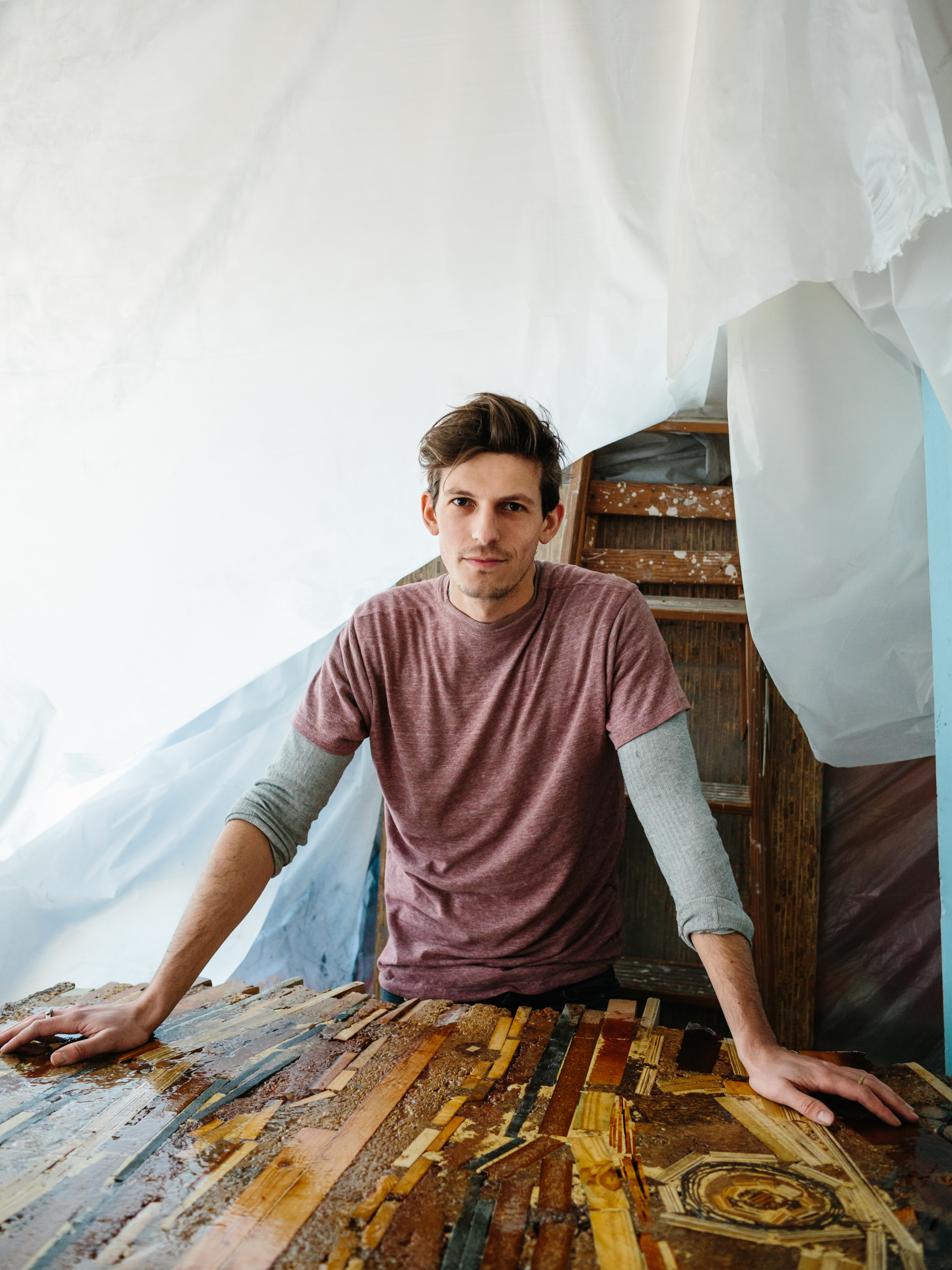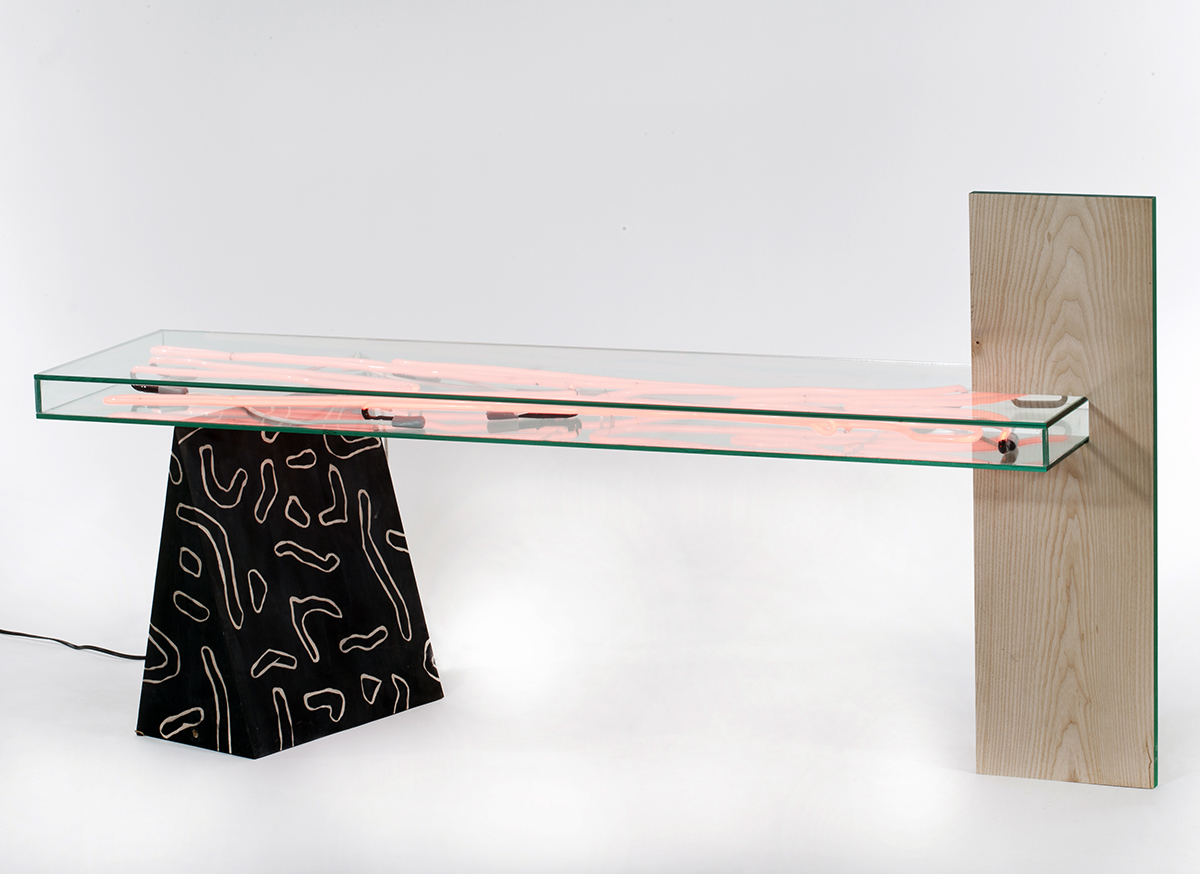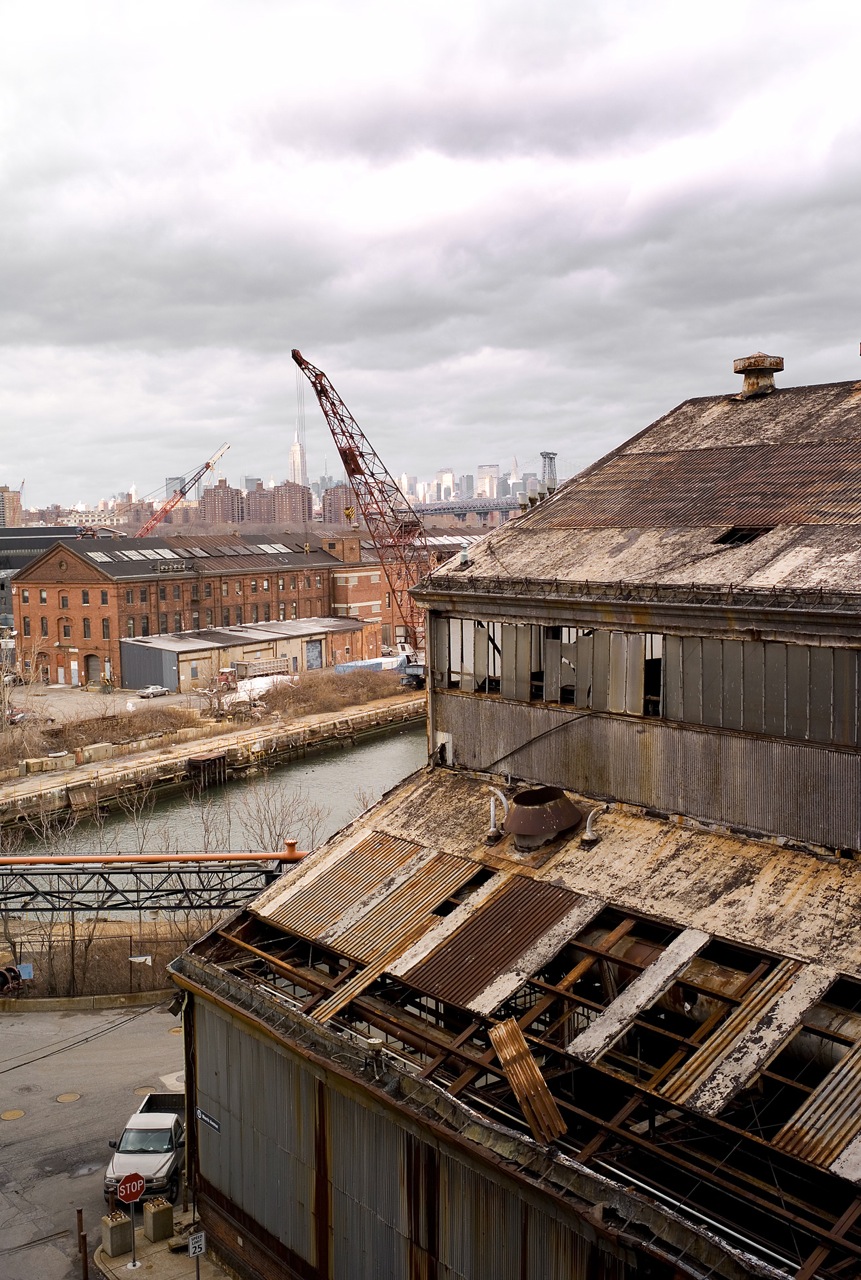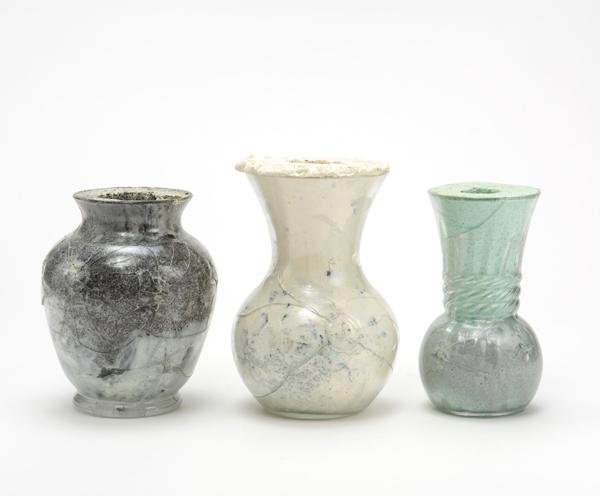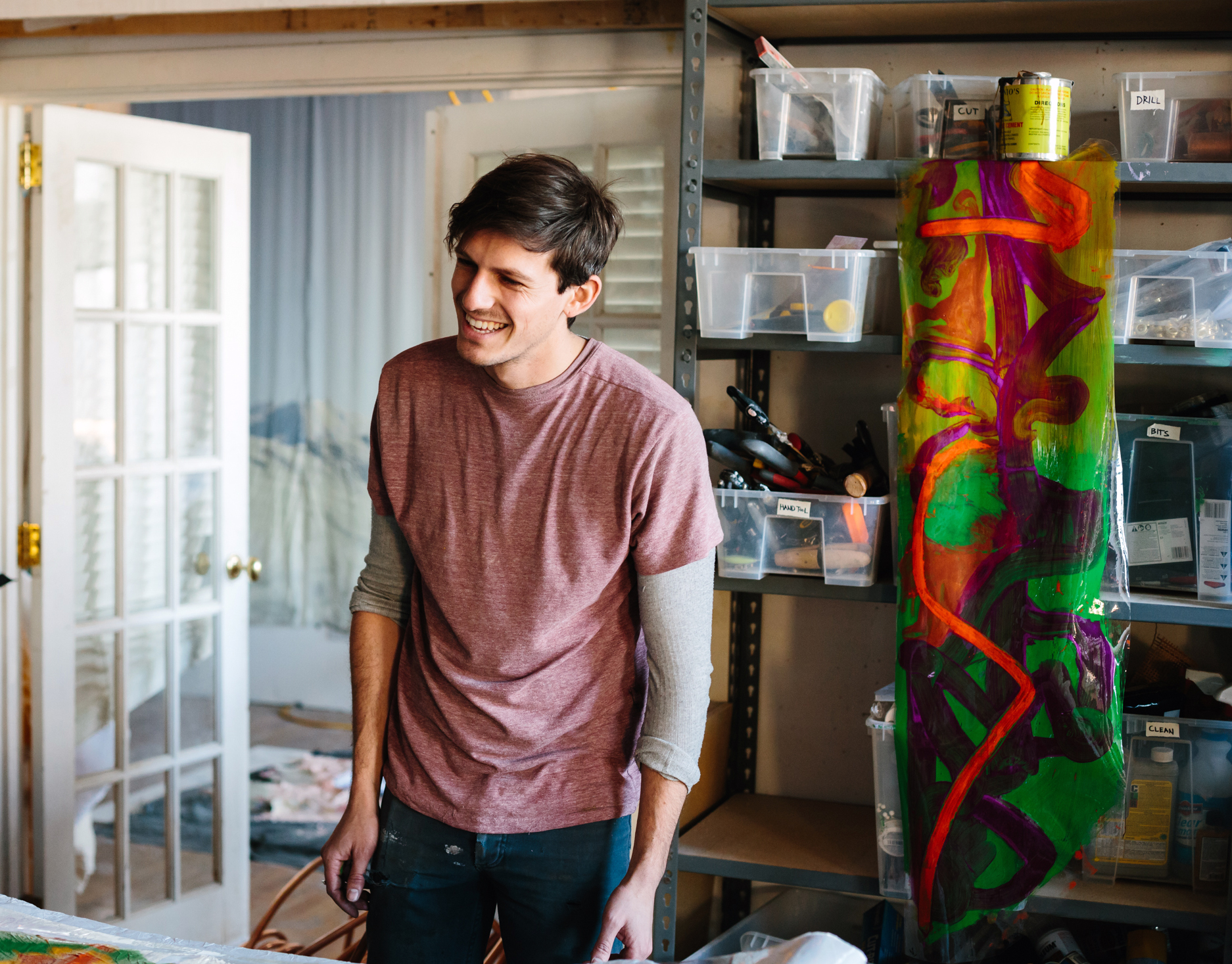
03.09.16
Studio Visit
Inside the Brooklyn Workshop Where Misha Kahn’s Radical Ideas Come to Life
STUDIO PHOTOS BY BRIAN W. FERRY
When I arrive at Friedman Benda’s basement project space, just hours before Misha Kahn’s first-ever solo exhibition with the prestigious Chelsea gallery is set to begin, things are in a state of flux. Several members of his family — in from Minnesota, where Kahn was born and raised — are hunched on the gallery floor, lacing up the edges of a giant pink acrylic chaise; his mother is floating around the room, helping the 27-year-old designer assign last-minute names to his retro-futuristic pieces. She contemplates an aluminum console, its slab top perched upon a puffy, freeform base and asks, “What should we name this one?” “Something related to Tommy Bahama,” Kahn tosses off without blinking.
The coastal-casual response might seem arch but such references wouldn’t be out of place in the world Kahn so thoroughly conjures in “Return of Saturn: Coming of Age in the 21st Century,” an exhibition that somehow looks both forward and back at the same time. “Astrology tells us that every 27 years, Saturn returns to the same place in the sky that it occupied at the moment of a person’s birth, and that this is a good time to review one’s life,” read the exhibition materials. “Kahn, now approaching 27 years old, takes stock of his life up until this point. It’s a survey of the apathetic nostalgia of a millennial reviewing a life defined by the acquisition of items.”
The exhibition is set up not like a typical gallery presentation but like an over-the-top fantasy living room; every piece in the show represents a typical domestic archetype and yet is like nothing you’ve ever seen before. One chandelier is woven from clear vinyl aquarium hoses; another looks like a tiny UFO, with copper cones sprouting from its center and blown-glass tentacles dangling underneath. Amorphic floor lamps, made in resin from vinyl molds that were inflated using a bouncy-house blower, are covered in a UV-protective, automotive clear coat that sparkles under the light. A hairy china cabinet, made from African grasses, bone, and two recycled glass eyes, looks almost like something the Campana brothers would make, “but messier!” Kahn says gleefully. “The Campanas would tighten it up too much — there would be, like, brass feet to let you know it’s expensive.” The chaise, which Kahn intended to make from “the most perfect, light peach, alpaca bouclé or whatever,” shows up here in “shitty pink acrylic.”
And therein lies the appeal of Kahn’s work — while many designers of his generation are focused on of-the-moment, high-end material combinations like marble and brass, Kahn somehow makes items even more covetable by turning almost exclusively to the lower end of the spectrum. Wondering exactly what kind of environment inspires those kinds of material choices, we caught up with Kahn at his Brooklyn studio in the lead-up to the exhibition to find out more about the designer and his process. (For even more of Kahn’s inspiration and influences, check out our 2013 interview with the designer)
Tell me about the premise of this exhibition.
When Marc Benda told me two years ago that this is when my show would be, I remember thinking that it was funny that it was going to be my return of Saturn. My kneejerk reaction was like, ‘Oh that’s a stupid idea.’ But it was the one that stuck, and it somehow worked with everything I was thinking about and wanting to do with this show. Rather than a series of objects, I wanted to create a retrospective of pieces pulled from various influences throughout my life.
I also wanted to give myself the opportunity to play with different materials and processes and production people. I didn’t want it to be a bunch of resin pieces, or a bunch of concrete. In fact, there’s a lot of nature in this show. The art I saw growing up had to do with nature and animals, but you get trained to not like those things at art school; your peers persuade you into some type of coolness.
I guess I’d been making all these things that seemed hyper-artificial, and Kat from W Magazine was over at my studio, laughing about how I had a plant. I made some vaguely inflammatory comment about how I don’t think being inspired by nature is good because the final product is always going to be disappointing. They ended up using that comment on Instagram, and there were like hundreds of comments from the trolls. But it made me think it would be interesting to try to work with natural materials and do my version of it. The objects in the exhibition are transformed, so it’s not like you see them and think, “Oh, that’s inspired by Eskimo carvings into whale bones.” But there is a dining table made from wood, sawdust, and cardboard. There’s a china cabinet with grass and straw and bones and recycled windowpanes, all made in Swaziland.
There’s a quote in the exhibition materials that reads: “I realize I have been wildly inspired by objects I wasn’t sure if I loved or hated.” Can you talk about some of these inspiration points?
A lot of pieces in the show are based on things I really liked at one point in time but then just totally discarded. The big mohair tapestry is based off of these Jell-O molds that I collected like crazy at RISD. At some point, I was like, ‘What are these weird nostalgic kitchen objects I have so many of?,’ and I just threw them away. For me, Jell-O became a weird way to talk about other things that are happening in design. There’s a squishy amorphic thing that seems to be now the vision of the future as opposed to that old Jetsons angularity, and it seems to be a response to what the technology wants instead of what the eye wants. Using computers to render things, where everything has to have a radius, promotes this balloon-y proportion situation — like Jell-O.
Friedman Benda might be the last place you’d expect to find a psychedelic mohair tapestry inspired by Jell-O molds.
Yeah, it’s interesting what they see in my work. They show all these insane superstars. Andrea Branzi or Wendell Castle — their work is like a sharp dart. Mine are just light experiments, wandering off in different directions. So the context is a bit unexpected.
The show is not so much an exhibition as an immersive site-specific installation, and you really commit to the idea of the domestic fantasy world. Was that always part of the plan?
To a certain degree, I feel like my peers adopt the status quo way of making and presenting work, where you made one body of work and present it in a clean environment. But I don’t think that’s at all consistent with the way we’re experiencing the world. There are so many things coming at us; we’re constantly looking at images on our phones. We’re able to visually deal with so many things at once. So instead I wanted to create this vaguely domestic wonderland, where it’s set up almost like you’re in a normal house but then all the objects are reimagined in their own way. I’m not trying to push people to make their whole house like this. You’ll find one object you like maybe. But the show is a fun opportunity to present an escapist fantasy version of domestic life, understanding that what people take away from an exhibition is like a souvenir from a trip.
How much does the suburban lifestyle of your childhood play into the work you make?
My dad built our first childhood house emerging from bedrock but crazy furniture was never part of the picture. He actually ran a company that made prefab Swedish furniture that looked like Ikea and we just had that everywhere. So it’s funny that I make the furniture I do.
Who wove the tapestry for you? How much work do make here in the studio vs. outsourcing fabrication?
I was in Swaziland and South Africa last spring traveling around, and it was a magical trip for meeting people who make things. It was the first time I felt like I didn’t have to coax someone into loosening up. Here, things often end up feeling a little prop-y — like everything will be perfect and then they’ll make the edge funky. There, they make things in such a human way. So Mags Stephens wove the tapestry in Johannesburg — she does all of William Kentridge’s stuff — and Bronze Age in Cape Town did the bronze casting. Those little aluminum pieces were also made in Swaziland; they feel a little like a retro vision of the future. Wheaton Glass made some stuff, and I worked with a spinning factory in Brooklyn. Everything else I did in my studio, but somehow it all feels of my wandering hand.
What are some of your favorite pieces in the exhibition?
The china cabinet. I sent the workers a maquette and lots of full-sized drawings. But by the time the glass arrived, they only had a week to work on the weaving, so I didn’t see any pictures until it had already shipped. It was like 10 times Christmas when it arrived. But because the show is so varied, I love them all in different ways.
You’re BFF and studiomates with Katie Stout, and she also recently did a coming-of-age–themed installation. How, if at all, do you guys influence each other?
It’s funny how that happened because obviously we hang out all the time but I don’t feel like we talk about ideas like that. It feels like we’re always thinking same thing on accident. I remember when she came back from being on Ellen’s Design Challenge and I’d been working for on a show for Bergdorf’s. The cabinet she made was so similar to one I did, but we were across the country, not talking to each other.
How would you describe your work to a stranger?
Usually when I tell people I make furniture, they ask, “Do you make modern furniture?” And I say “Noooo….” and just sort of trail off. And then I show them a picture and they say “Oh. That’s art.”
Tell me about this studio. How did the move from the Navy Yard to Bushwick affect your work?
Somehow my work always ends up looking like the space around it. It’s almost like the eye wants to make things that look good in the space you’re in. My first studio in the Navy Yard felt like being inside a cube so that stuff ended up being very geometric. This space has a slanted ceiling and a ladder that comes down and little windows and skylight. It kind of feels like you’re in a weird angled ship; it feels warm and domestic and that vibe has come into the work. It’s the first time I feel like I actually have something lovely in New York that’s mine.
